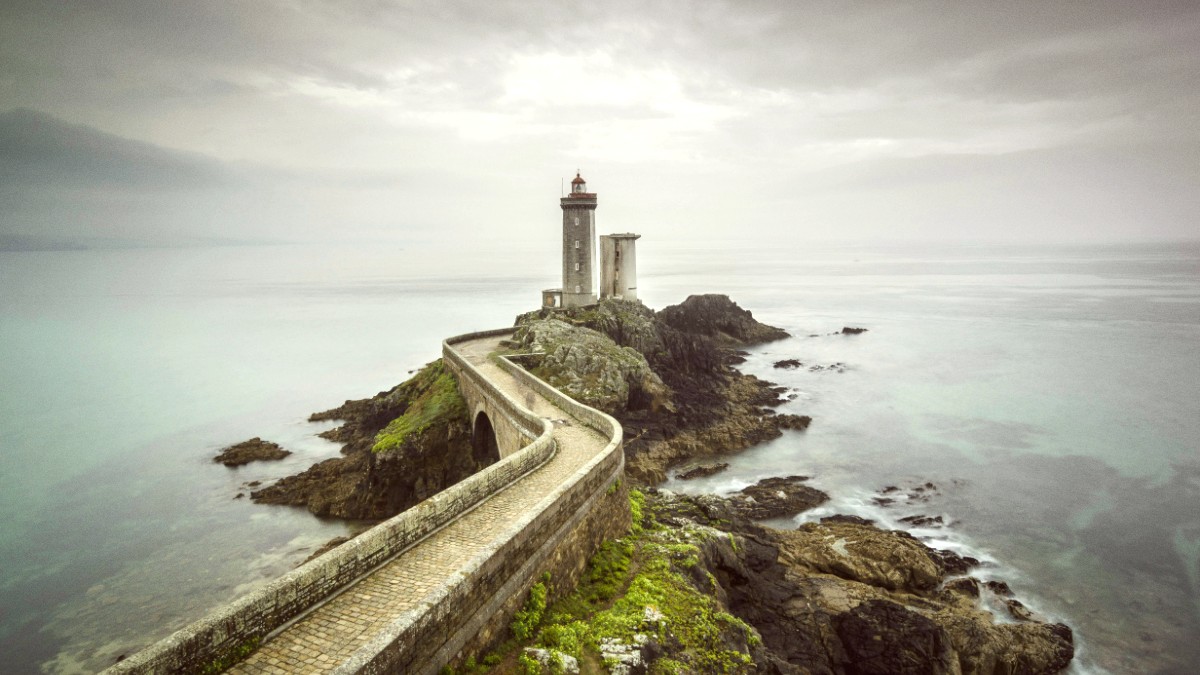
France
Brest sits in the Finistère department of Brittany, a peninsula that extends into the Atlantic Ocean. This strategic location has defined the city for centuries. Brest lies on the northern shore of the Rade de Brest, one of the world's largest natural harbors. This deep, sheltered bay, linked to the Iroise Sea and the broader Atlantic by the narrow Goulet de Brest channel, served as a naval stronghold for hundreds of years. The city stands on hills surrounding the Penfeld River, which flows into the harbor. This topography presents dramatic viewpoints across the water and the city.
The history of Brest is a story of strategic importance, destruction, and remarkable rebirth. From its origins as a Roman camp, Brest grew in significance due to its natural harbor. By the 17th century, under the guidance of Cardinal Richelieu and later Louis XIV's minister Jean-Baptiste Colbert, and fortified by military engineer Vauban, Brest became France's main Atlantic naval base. This role as a major military port shaped its development, making it a target in numerous conflicts.
During World War II, Brest suffered immense destruction. Its strategic location made it an useful U-boat base for the Germans and, consequently, a main target for Allied bombing campaigns. By the end of the war, over 90% of the city center lay in ruins. The post-war reconstruction was a massive undertaking, guided by architect Jean-Baptiste Mathon. He designed a new, modern city, characterized by wide avenues, functional architecture, and durable concrete structures. While this rebuilding erased much of the old city's physical fabric, it gave Brest a powerful spirit of resilience and forward momentum.
Brest offers visitors an unique experience. Its character is one of discovery, where the power of the ocean meets urban innovation and an unique Breton identity thrives. Prepare for a welcoming community and unforgettable moments in this captivating corner of France.
Options include maritime exploration, coastal hiking, cycling, museum visits, and experiencing the lively local culture. The public transport system (Bibus network, including a tramway and buses) efficiently connects the city.
A strong influence from the sea; fresh catches are common.
A savory Breton specialty, often filled with cheese, ham, or egg.
A delicious local sweet treat.
A popular traditional drink, often served with galettes.
A rich, buttery, and sugary cake from Brittany.
Brest has around 140,000 residents, a dynamic university city with youthful energy. The ideal time to visit is during summer (July-August) for warmth and festivals. Shoulder seasons (May-June, September-October) provide pleasant weather and fewer crowds.
Brest is situated in Finistère, the westernmost department of Brittany, France, opening to the Atlantic on a vast natural harbor.
A temperate oceanic climate is present, with mild temperatures, occasional rain, and noticeable Atlantic winds.
Brest is more than a naval port; it is a city of discovery, where the power of the ocean meets urban innovation and an unique Breton identity thrives. Prepare for a welcoming community and unforgettable moments in this captivating corner of France.
Brest offers a variety of attractions that highlight its maritime heritage, natural beauty, and modern vibrancy. These sites are for any visitor's itinerary.
The city's history as a port city is proudly displayed in its museums, monuments, and the layout of its rebuilt streets. The Tour Tanguy and the Château de Brest, two of the few structures to survive the war, are poignant reminders of the city's long past, contrasting sharply with the 20th-century architecture that surrounds them.
A large, world-renowned ocean discovery park with three pavilions: polar, temperate, and tropical.
A historic castle housing France's National Navy Museum.
A vast, redeveloped former industrial site, now a cultural and commercial hub, accessible via a cable car.
Beyond its major institutions, Brest presents other architectural and natural gems.